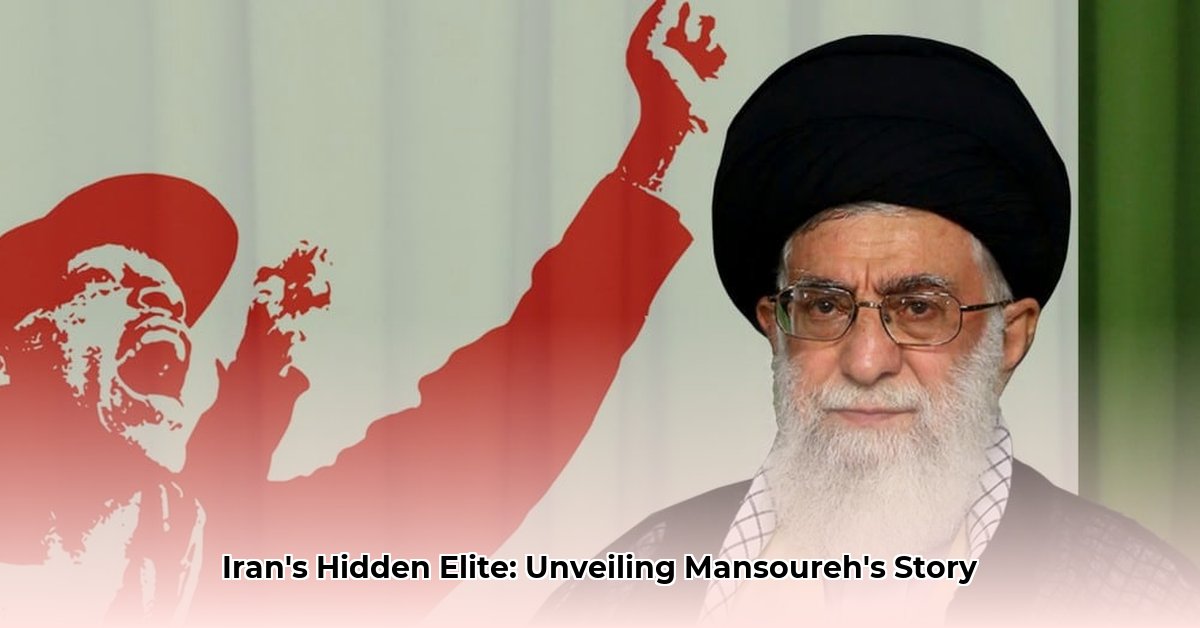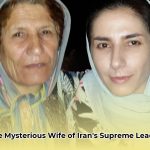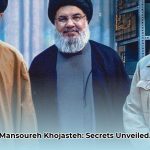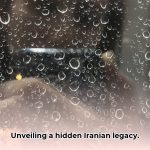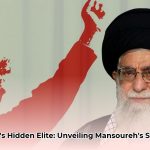Who was Mansoureh Khojasteh Bagherzadeh? Even her name hints at a concealed existence. The wife of Iran’s Supreme Leader, Ali Khamenei, she remains an elusive figure, her life shrouded in secrecy. For more information, see this detailed biography. This piece endeavors to construct a narrative – of what we currently understand – regarding her educational background. It’s a complex riddle, characterized by incomplete data and contradictory accounts. We will examine the limited available details, analyze the difficulties in researching her life within the Iranian political sphere, and extract insights about the woman hidden behind a facade of confidentiality. It’s a narrative centered on authority, political affairs, and the concealed personal lives of individuals occupying the highest echelons of power.
Mansoureh Khojasteh Bagherzadeh Education: A Shadowy Profile
Comprehending the educational background of Mansoureh Khojasteh Bagherzadeh is comparable to attempting to complete a jigsaw puzzle containing numerous missing pieces. Information is scarce, partially attributed to the inherent confidentiality surrounding Iran’s elite and the complexity of its political system. Nevertheless, by scrutinizing the limited information at our disposal and considering historical background, we can formulate a plausible interpretation of her personal history. Let’s explore the historical context of education in Iran to fully understand the opportunities available to women like Mansoureh.
School Days in Iran: The 1940s and Beyond
To comprehend Mansoureh’s likely educational trajectory, we must journey back to mid-20th century Iran. Opportunities accessible to women were restricted, frequently molded by societal anticipations and familial customs. For young women hailing from religious backgrounds, religious educational institutions were frequently the favored option. Secular education, specifically advanced studies, was less prevalent among women, with accessibility fluctuating considerably based on aspects such as location, household prosperity, and regional conventions. This circumstance renders it challenging to precisely delineate her schooling. Did societal expectations limit her access to certain fields of study? Consider also, the political climate and the evolving role of women in Iranian society during her formative years.
The Missing Pieces of the Puzzle: Uncertainties and Contradictions
Even fundamental aspects of Mansoureh’s existence remain uncertain. Her precise year of birth is unknown; sources propose dates fluctuating from the early 1940s to 1947. Some accounts place her birth in Tehran, while others suggest Mashhad. This ambiguity renders pinpointing her education extremely challenging. Did she attend a traditional religious institution? A non-religious institution? Did she pursue advanced studies? Regrettably, definitive responses continue to evade us. We’re confronted with more inquiries than elucidations, endeavoring to construct a depiction from fragmented data. The existing uncertainties are a testament to the challenges faced when researching individuals in politically sensitive environments. What specific documented instances highlight these contradictions, and how do these disagreements impede a clear comprehension?
Family Background and its Potential Influence
Mansoureh originated from a lineage possessing commercial interests situated in Mashhad. Her father, Mohammad Esmaeil Khojasteh Bagherzadeh, was a well-known businessman. This likely afforded her access to advantages inaccessible to many others. In Iran, a family’s societal rank and affluence could considerably impact educational prospects. It is reasonable to hypothesize that her familial heritage impacted her educational selections, although the specifics remain obscure. We can only speculate regarding the types of educational settings she might have attended, the subjects she engaged in, and the educational level she attained. Family influence on elite education is a key factor. Could the Khojasteh Bagherzadeh family’s network have played a role in shaping her educational opportunities?
Beyond the Classroom: A Life of Quiet Strength
Despite the likelihood that particulars surrounding Mansoureh’s formal education will remain a mystery, her existence speaks eloquently. Her understated fortitude, dedication to domestic life, and unwavering advocacy for her husband’s professional trajectory were undoubtedly significant determinants. The deficiency of specifics pertaining to her schooling should not diminish her significance. Her influence, even if largely unseen by many, likely molded Iran’s political terrain indirectly. Her narrative underscores the capacity for considerable sway to function discreetly, often behind the scenes. Is Mansoureh’s quiet strength a reflection of the limited opportunities available to women in Iran during this period? How did her role as a wife and mother shape her impact on Iranian society?
The Challenges of Uncovering the Truth in a Complex Political Setting
Investigating the existence of someone prominent within a nation characterized by a politically impenetrable system, such as Iran’s, presents intrinsic challenges. Contradictory information underscores the obstacles encountered by individuals endeavoring to construct a comprehensive depiction. It epitomizes the challenges inherent in uncovering truth when official information is frequently restricted or regulated. Nevertheless, the very endeavor to unveil her narrative mirrors broader fascination with influential individuals who remain predominantly unknown publicly. This underscores the importance of maintaining journalistic integrity when covering sensitive political topics. What are the specific laws or regulations in Iran that restrict access to information about public figures?
The Search Continues: A Call for Further Investigation
Researchers and historians are continuing to search for information about Mansoureh. More research could potentially unearth new facts. Researchers are exploring archival materials, interviewing people who knew her, and looking for possibly declassified documents that could shed light on her background. There’s hope that some of the unanswered questions about her education and life might eventually be answered. Until then, her story stands as a reminder of the many unknowns surrounding even the most prominent figures. Her life also serves as a compelling reminder to consider the complexities of investigating such figures in politically complex environments, especially those characterized by a lack of transparency. As of late 2025, historians continue to piece together fragments of information to paint a clearer picture of her life and influence; can further documentary evidence change the current understanding? What specific archives or institutions might hold relevant information about her life?
Unveiling the Secrets: How to Verify Information about Mansoureh Khojasteh Bagherzadeh
Key Takeaways:
- Mansoureh Khojasteh Bagherzadeh’s life remains largely shrouded in secrecy. Information is scarce and often contradictory.
- Verifying details requires scrutinizing multiple sources, comparing them, and acknowledging inconsistencies.
- Contextual understanding of Iranian politics and societal norms is crucial for interpretation.
- The lack of transparency makes definitive conclusions difficult, highlighting the challenges of researching powerful figures in closed societies.
- Focus on corroborating evidence from multiple independent and credible sources.
The Elusive First Lady
Mansoureh Khojasteh Bagherzadeh, wife of Iran’s Supreme Leader, Ali Khamenei, is a fascinating enigma. She remains mostly absent from public view, making even basic biographical data elusive. To what degree is the absence of public information a deliberate act of concealment? How do we piece together an accurate picture of her life, especially her education? Understanding the motivations behind this privacy is key to approaching the subject with sensitivity and accuracy.
The Challenges of Verification
Attempting how to verify information about Mansoureh Khojasteh Bagherzadeh presents unique hurdles. Unlike many public figures, little verifiable information exists in the public domain. Many sources are unreliable, fueled by speculation or political agendas. This lack of transparency makes fact-checking a significant challenge. The challenge of verifying information emphasizes the need for diligent research. What are some examples of misinformation or speculation that have circulated regarding her life?
Strategies for Verification
Several steps can assist in the process of verifying what limited information is available:
- Cross-referencing: Compare information from multiple sources. Discrepancies highlight areas needing further investigation. Did various accounts of her early life align with each other? Are there any common threads or patterns that emerge across different narratives?
- Source Evaluation: Assess the credibility of each source. Consider the source’s potential biases and motivations – political, religious, or otherwise. Is your source from a known reliable news outlet or social media gossip? Evaluating sources is paramount to responsible journalism and credible reporting. Are there any specific organizations or individuals known for providing reliable information about Iranian public figures?
- Contextual Analysis: Interpret information within the context of Iranian politics and culture. Understanding societal norms and media control is vital. Consider the potential impact of censorship on the information. What are the political implications of releasing information about the Supreme Leader’s family? An understanding of cultural and political nuances is essential for accurate interpretation. How does the Iranian government’s control over the media affect the availability and reliability of information about public figures?
- Primary Source Search: While seemingly impossible, persistently seek primary sources, such as official documents or personal accounts, although these are likely incredibly rare to find. Are there any known archives or libraries, either within Iran or internationally, that might hold relevant primary source materials?
- Expert Consultation: Seek expert opinions from Iran scholars or those specializing in Middle Eastern politics to contextualize and analyze existing information. Consulting qualified experts provides crucial validation and contextualization. Which specific scholars or institutions are considered leading experts on Iranian politics and society?
What We Do Know (and Don’t Know)
While many facts surrounding her life remain unknown, some generally accepted information includes her marriage to Ali Khamenei, her birth in Mashhad, and her affluent religious family background. However, even these basic details often lack precise confirmation. Her education remains largely undocumented. We simply don’t know. The limited pool of data emphasizes the necessity for caution when formulating assertions. What are the implications of this lack of information for understanding her role and influence within Iranian society?
The Importance of Context
Understanding the highly controlled nature of Iranian media is crucial. Anything released about the Supreme Leader’s family likely undergoes strict
- Uncover Marty McSorley’s Hockey Legacy: A Complex Career - July 17, 2025
- Jerry McSorley Post-Hockey Success: New Life, New Ventures - July 17, 2025
- Unlock Jerry McSorley’s Business Success: A Quiet CEO’s Story - July 17, 2025
